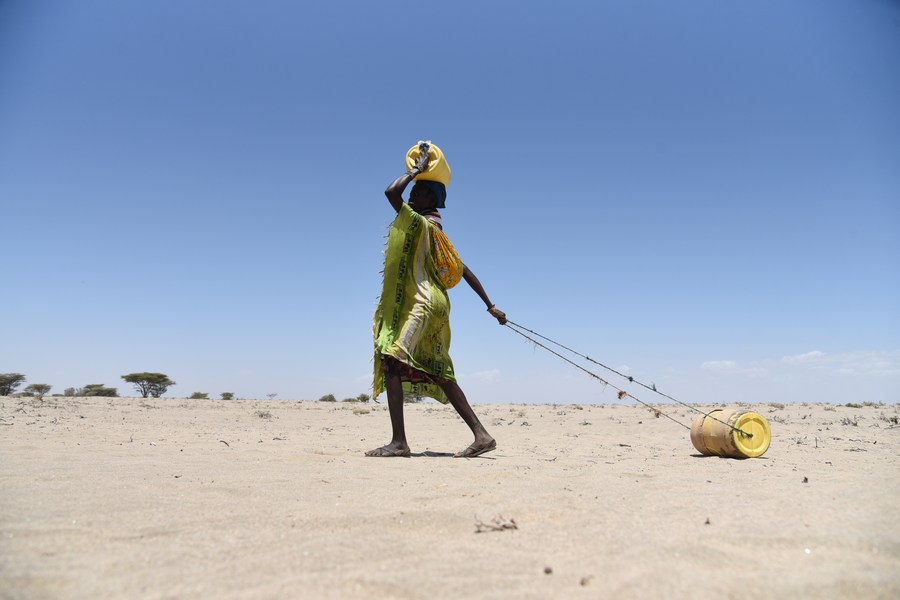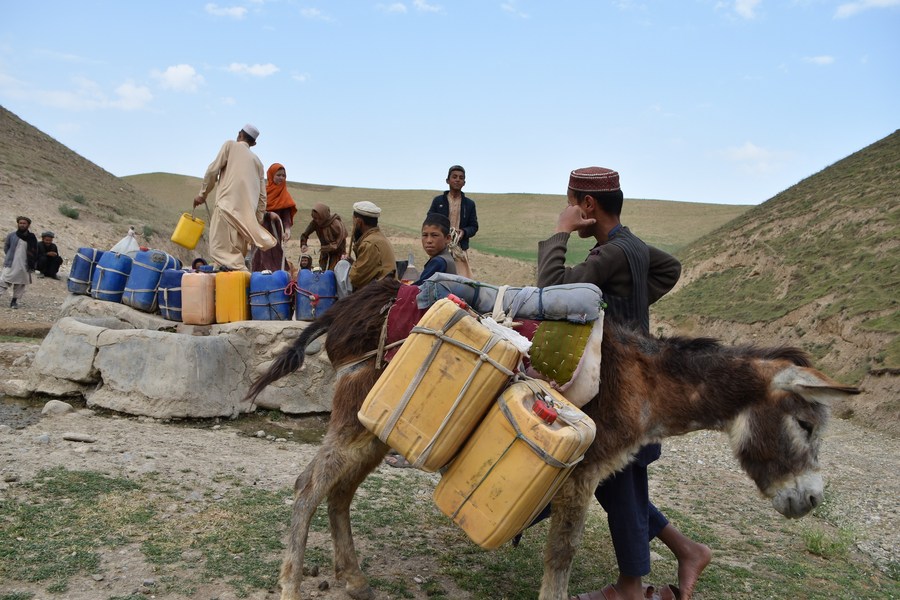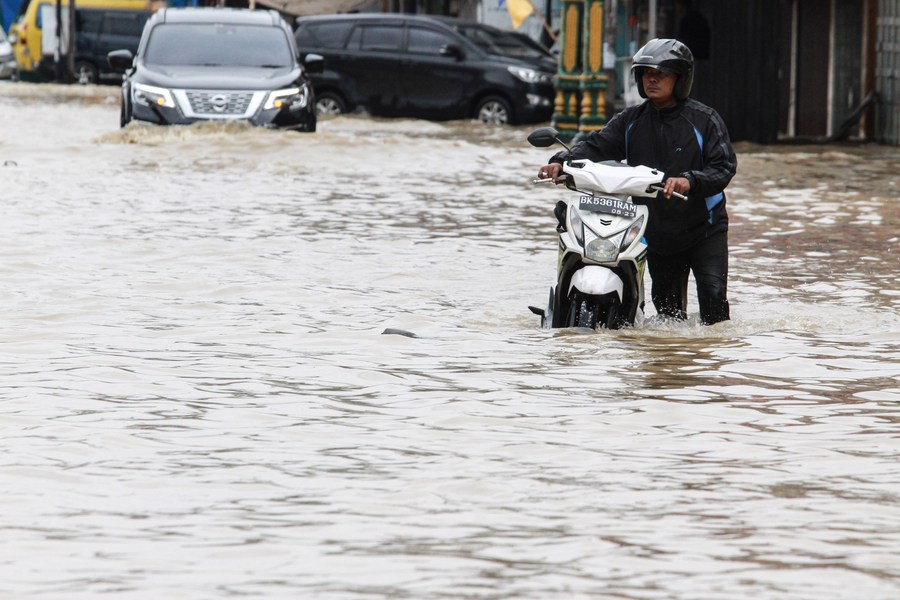


A woman transports jerrycans of water in drought-hit Turkana County, Kenya, on Oct. 11, 2022. (Photo by John Okoyo/Xinhua)
It shows that due to the influence of climate change and a La Nina event, the year 2021 witnessed large areas of the globe recording drier than normal conditions.
GENEVA, Nov. 29 (Xinhua) -- Around 3.6 billion people currently face inadequate access to water at least a month per year, the World Meteorological Organization (WMO) said in its State of Global Water Resources 2021 report published on Tuesday.
The figure is projected to increase to more than 5 billion by 2050. The report assesses the effects of climate, environmental and societal change on the Earth's water resources. Its aim is to support the monitoring and management of global freshwater resources in an era of growing demand and limited supplies.
It shows that due to the influence of climate change and a La Nina event (period cooling of ocean surface temperatures in the tropical Pacific), the year 2021 witnessed large areas of the globe recording drier than normal conditions. Compared with the 30-year hydrological average, the area with below-average streamflow last year was approximately two times larger than the above-average area.

Villagers fetch drinking water from a well in Baghlan Province, Afghanistan, April 24, 2022. (Photo by Mehrab Ibrahimi/Xinhua)
Between 2001 and 2018, the interagency mechanism United Nations Water reported that 74 percent of all natural disasters were water-related. The recent 27th Conference of the Parties of the United Nations Framework Convention on Climate Change (COP27) has urged governments to further integrate water into adaptation efforts. It was the first time that water has been referenced in a COP outcome document in recognition of its critical importance.
According to WMO Secretary-General Petteri Taalas, though the impacts of climate change are often felt through water -- such as more intense and frequent droughts, more extreme flooding, more erratic seasonal rainfall and accelerated melting of glaciers -- there is still insufficient understanding of changes in the distribution, quantity and quality of freshwater resources.
The WMO report aims to fill this knowledge gap, which would be helpful in providing universal access in the next five years to early warnings of hazards, such as floods and droughts, he said.

A man pushes his motorbike through flood water in Medan, North Sumatra, Indonesia, Nov. 19, 2022. (Photo by Byma/Xinhua)
点击右上角![]() 微信好友
微信好友
 朋友圈
朋友圈

请使用浏览器分享功能进行分享
